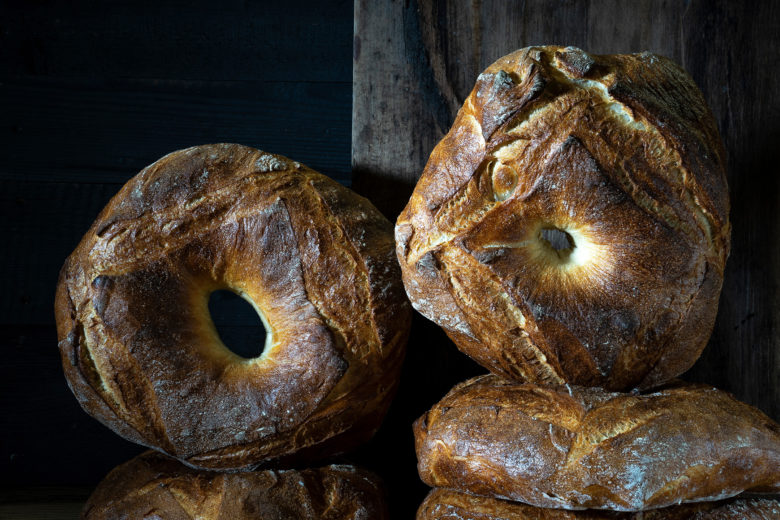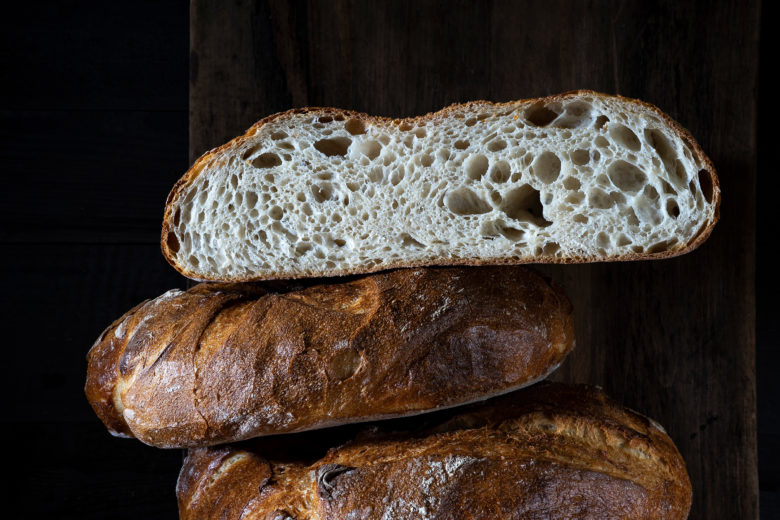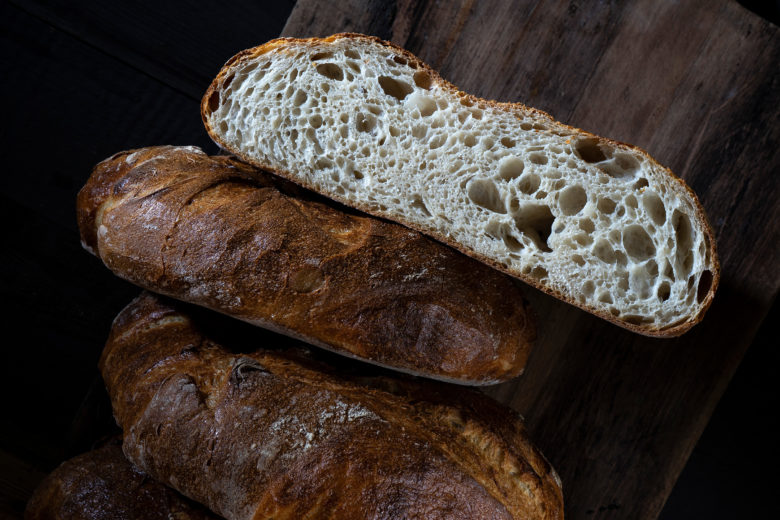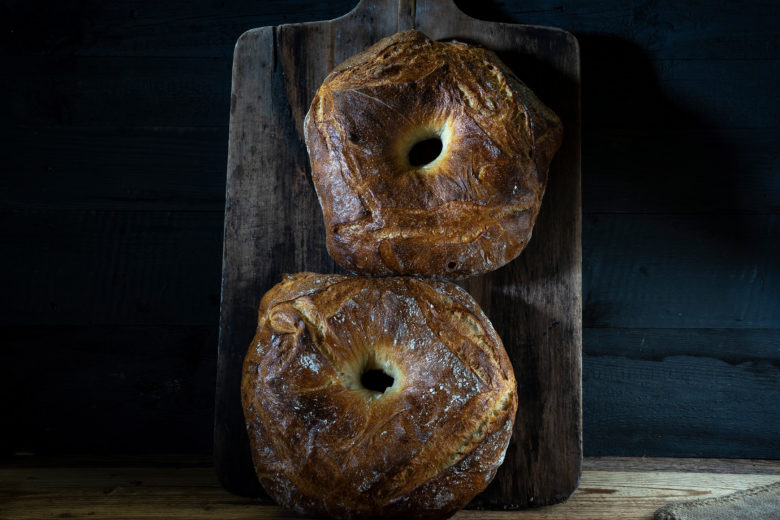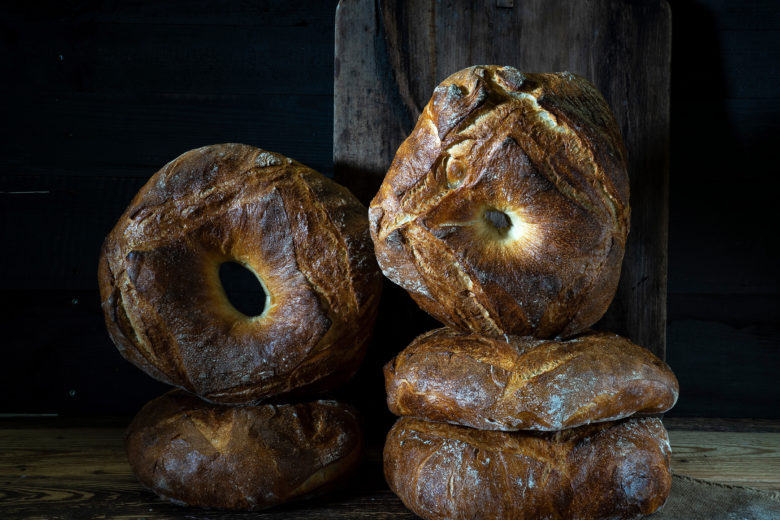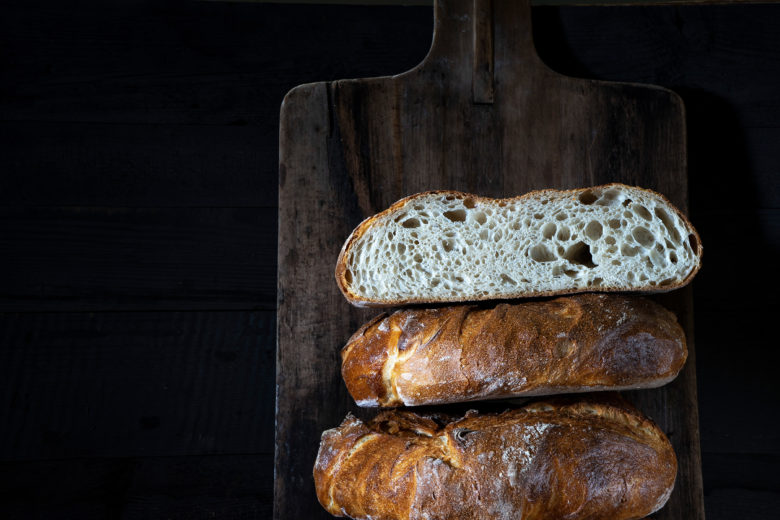Pane Durum
Another recipe from the semolina corner that also happens to be easy to make and turns out great! For me, the recipe was more of an attempt with a high dose of a madre. With exactly 50% of the amount of flour, this bread has an extremely high and extraordinary amount added, but what exactly was my aim in this experiment?
The Lievito Madre was fed in two steps with the same amount of flour. The difference between the two was the maturity time for each step- in the first step it was 6 hours and it was 3 hour for the second.
After 3 hours (step 2) the madre had “not yet” reached its full maturity and that’s precisely what I wanted by kneading it into the main dough while it was still somewhat immature. The basic idea of this experiment was actually a further refreshment only with salt, a little malt and a higher hydration!
I was amazed by how strong the main dough developed with this method. The bread also convinced me in terms of taste, which conjured up pure flavors with a deeply browned crust and even with a reduced amount of salt.
Recipe
For a dough weight of 1730g / 2 pieces, each 865g of dough
Total Recipe
| 500g | Wheat flour Type 550/700 | 50% |
| 500g | Semolina flour | 50% |
| 700g | Water | 70% |
| 15g | Salt | 1,5% |
| 15g | Malt (liquid/active) | 1,5% |
Lievito Madre
1st Refresh:
| 250g | Wheat flour Type 550/700 |
| 125g | Water 30°C |
| 125g | Starter |
Dissolve the starter in water and mix with the flour until free of lumps. Then allow it to rise for 6- hours until it has doubled in volume.
2nd Refresh:
| 375g | Refreshed Lievito Madre / Step 1 |
| 125g | Water 30°C |
| 250g | Wheat flour Type 550/700 |
Before the second refreshment takes place, weigh out 125g of starter and place in the refrigerator to use again. Then feed the remaining madre with water and flour.
Then this stage rises until it has increaded in volume by 75%- about 3 hours. Depending on the condition of your starter this time could be longer or shorter!!
Main dough
| 750g | Lievito Madre |
| 500g | Semolina flour |
| 450g | Water 15°C |
| 15g | Salt |
| 15g | Active malt |
Production
- Mix the Lievito Madre, water and semolina for 2 minutes on a slow speed in the mixer and then cover and allow to autolyse for 45 minutes.
- Then add the salt and malt and mix an additional 7-8 minutes on slow speed. Then knead quickly until the dough has released from the side of the mixing bowl- once released, knead an additional minute on fast. Anschließend den Teig in eine geölte Wanne legen.
- Fold in the mixing bowl after 45 and 90 minutes.
- After the second fold allow another 75-90 minutes to rise in the bowl (volume increase of 60-70%).
- Now divide the dough into two equal-sized pieces and fold the dough into a round. With the seam-side down, place on a floured work surface. The dough doesn’t need to have a perfect and smooth surface (we’re going for rustic!).
- After a relaxation time of 30 minutes a whole is pressed into the middle of the dough. This is done best with a bent elbow- simple press your bent elbow into the middle of the dough until it hits the bottom. Then enlarge the whole with your fingers to about 12-15cm.
- In its final form the loaf is placed on a floured linen cloth/baking paper.
- Final proof of about 20-30 minutes
- Before baking score the surface with a sharp razor and bake in the oven preheated to 240°C with strong steam.
- Reduce the oven temperature to 210°C and bake until well browned.
- Baaking time, c. 40 minutes.
CAREFUL: This procedure is only possible if the dough has been perfectly kneaded – so it has enough stability to keep its gas holding capacity inside and not get flat!


